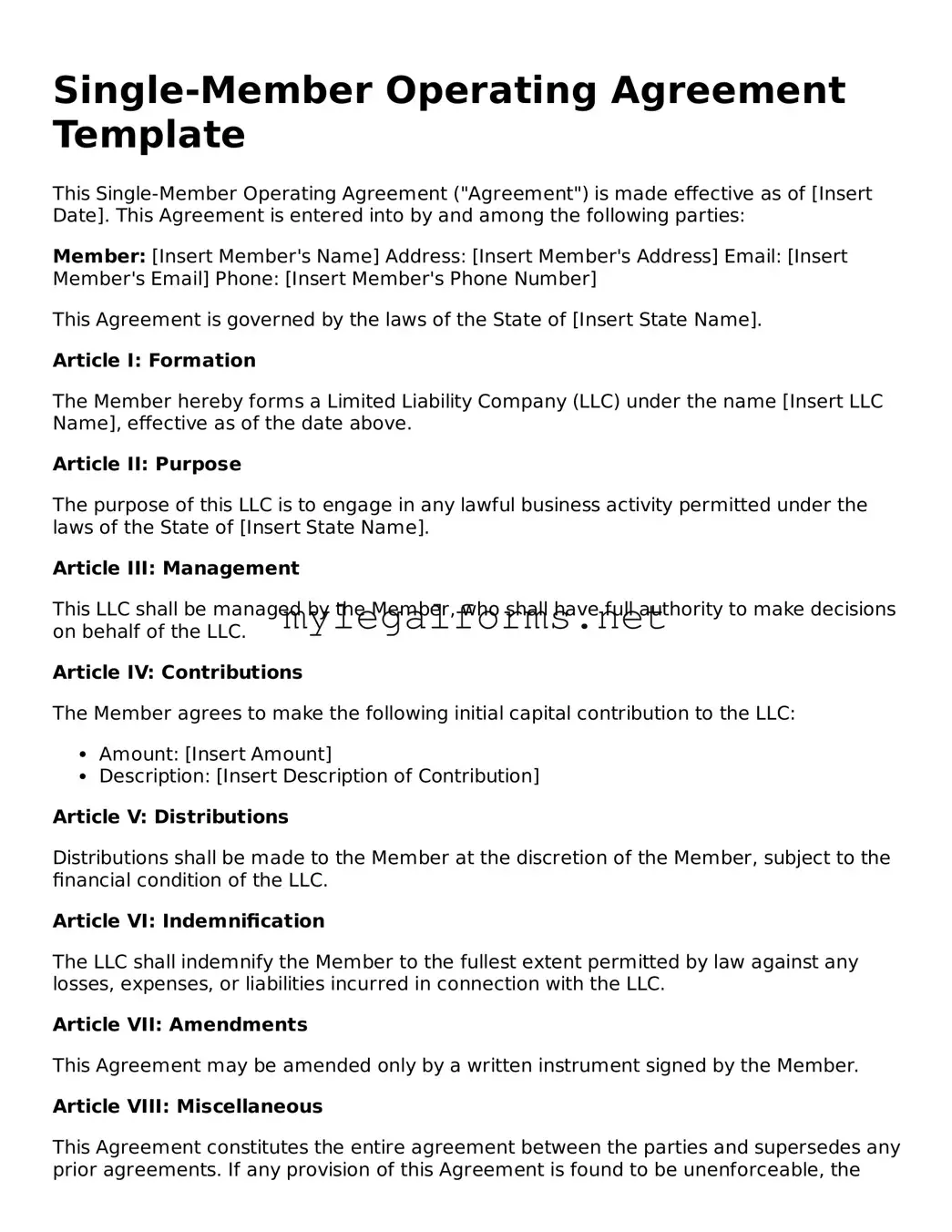Single-Member Operating Agreement Template
This Single-Member Operating Agreement ("Agreement") is made effective as of [Insert Date]. This Agreement is entered into by and among the following parties:
Member: [Insert Member's Name]
Address: [Insert Member's Address]
Email: [Insert Member's Email]
Phone: [Insert Member's Phone Number]
This Agreement is governed by the laws of the State of [Insert State Name].
Article I: Formation
The Member hereby forms a Limited Liability Company (LLC) under the name [Insert LLC Name], effective as of the date above.
Article II: Purpose
The purpose of this LLC is to engage in any lawful business activity permitted under the laws of the State of [Insert State Name].
Article III: Management
This LLC shall be managed by the Member, who shall have full authority to make decisions on behalf of the LLC.
Article IV: Contributions
The Member agrees to make the following initial capital contribution to the LLC:
- Amount: [Insert Amount]
- Description: [Insert Description of Contribution]
Article V: Distributions
Distributions shall be made to the Member at the discretion of the Member, subject to the financial condition of the LLC.
Article VI: Indemnification
The LLC shall indemnify the Member to the fullest extent permitted by law against any losses, expenses, or liabilities incurred in connection with the LLC.
Article VII: Amendments
This Agreement may be amended only by a written instrument signed by the Member.
Article VIII: Miscellaneous
This Agreement constitutes the entire agreement between the parties and supersedes any prior agreements. If any provision of this Agreement is found to be unenforceable, the remaining provisions shall remain in full force and effect.
IN WITNESS WHEREOF, the undersigned Member has executed this Operating Agreement as of the date first above written.
_________________________
[Insert Member's Name], Member
